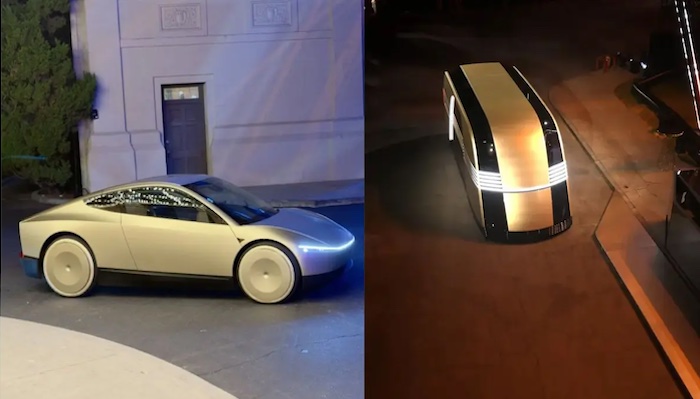Elon Musk unveils vision for autonomous future with Robotaxi, Robovan

The CEO of Tesla, Elon Musk, has unveiled ambitious plans for Tesla’s transition from automaker to robotics manufacturer at a highly anticipated event on.
The event, titled “We, Robot,” took place at the Warner Bros studio near Los Angeles, California, and featured the debut of groundbreaking vehicles designed to revolutionise transportation.
Musk took the stage to introduce a prototype “Cybercab,” a sleek robotaxi equipped with two gull-wing doors, designed to hit production by 2026 with a price tag below $30,000.
Musk said that operating the Cybercab would cost just 20 cents per mile over time, with inductive charging eliminating the need for traditional plugs.
“The autonomous future is here,” Musk declared, emphasising Tesla’s reliance on artificial intelligence and cameras instead of additional hardware like lidar, a strategy he believes will streamline production and operational costs.
“We have 50 fully autonomous cars here tonight. You’ll see Model Ys and the Cybercab. All driverless,” he added.
In addition to the Cybercab, Musk showcased the “Robovan,” a larger self-driving vehicle capable of carrying up to 20 passengers, marking Tesla’s entry into the autonomous public transportation sector.
The event also featured a glimpse of Tesla’s Optimus humanoid robot, underscoring Musk’s broader vision of integrating AI into various facets of daily life.
Tesla’s strategy involves deploying a fleet of self-driving taxis that customers can summon via a smartphone app, mirroring popular ride-hailing services.
Individual Tesla owners will have the option to list their vehicles as robotaxis on the app, potentially generating income through autonomous ridesharing.
Despite the excitement generated by Tesla’s technological showcase, investors and analysts at the event expressed disappointment over the lack of specific timelines and regulatory details crucial for scaling robotaxi production.
Dennis Dick, an equity trader at Triple D Trading and Tesla shareholder, commented, “Everything looks cool, but not much in terms of timelines… I think the market wanted more definitive timelines.”
Responding to concerns about delays and missed projections, Musk acknowledged his tendency to be optimistic with timelines, a trait that has occasionally led to unmet promises in the past.
Originally confident about launching operational robotaxis by 2020, Musk redirected focus this year towards vehicle development, abandoning plans for a smaller, more affordable car amid challenges in the EV market.
Tesla’s pivot towards robotics comes amidst intensified competition in the autonomous vehicle sector, with companies like Alphabet’s Waymo and General Motors’ Cruise vying for market dominance.
Unlike rivals who rely on costly hardware such as lidar, Musk remained committed to utilising cameras and AI for Tesla’s Full Self-Driving (FSD) technology, aiming to minimize costs while enhancing safety.
While regulatory scrutiny and technological complexities persist, Musk expressed optimism about achieving fully autonomous, unsupervised FSD in Texas and California next year, specifically with the Model 3 and Model Y vehicles.
However, he did not specify whether the upcoming robotaxi fleet would incorporate new technologies or depend solely on existing FSD capabilities.





